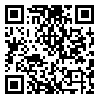BibTeX | RIS | EndNote | Medlars | ProCite | Reference Manager | RefWorks
Send citation to:
URL: http://ijdld.tums.ac.ir/article-1-5426-en.html

 , Mohammad Parvaresh Masoud2
, Mohammad Parvaresh Masoud2 
 , Ali Soleimani3
, Ali Soleimani3 
 , Hossein Rahmani Anarki4
, Hossein Rahmani Anarki4 
 , Leila Ghanbari afra5
, Leila Ghanbari afra5 
 , Hamid Asayesh *
, Hamid Asayesh * 
 6
6
2- Medical Emergency Department, Qom University of Medical Science, Qom, Iran
3- Department of Public Health, Maragheh University of Medical Science, Maragheh, Iran
4- Faculty Member, Medical-surgical department, Golestan University of Medical Science, Gorgan, Iran
5- Educational Supervisor, Kamkar-Arabnia Therapeutic and Educational Center, Qom University of Medical Science, Qom, Iran
6- Medical Emergency Department, Qom University of Medical Science, Qom, Iran ,
Background: health care providers have different attitudes and belies toward elders that have effect on their behaviors in health service delivery to older adults. This study was done to determine the Golestan province health centers staffs attitude towards elders.
Methods: In this cross-sectional study, 152 general practitioners of Glestan province health centers were selected via random simple sampling. Demographic questionnaire and Kogan's Attitudes toward Older People Scale (KAOPS) was used as data gathering tools. Data analysis was done in SPSS 16 software environment with Pearson correlation coefficient, paired t-test, t-tests and one way ANOVA.
Results: mean and standard deviation of participants age was 34.48 (4.31) years. Mean and standard deviation of total score of attitude toward elder scale was 116.42±9.58 (score range in scale 34-204). Lower score than mean were observed in 49.3 percent of health care providers. Negative attitude mean score were higher than positive attitude mean and paired t-test showed the difference is significant (P< 0.001).
Conclusion: according to our finding, only half of participants had favorite attitude toward aged people. Whereas, negative attitudes to this age group were higher than positive attitudes, designing some programs for change in attitudes of heath care staffs is necessary.
Received: 2015/10/12 | Accepted: 2017/07/1 | Published: 2017/09/28
| Rights and permissions | |
 |
This work is licensed under a Creative Commons Attribution-NonCommercial 4.0 International License. |



